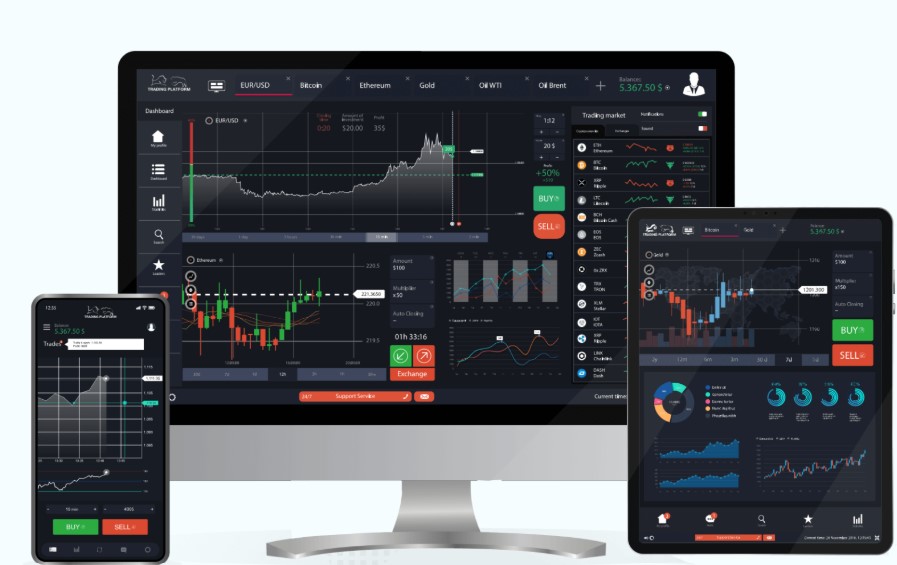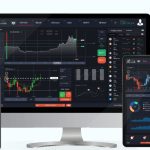
Understanding Different Types of Trading and the Most Popular Trading Business Today
Trading has always been an essential part of global economies, enabling the exchange of goods, services, and financial assets. Over the years, trading has evolved significantly with technological advancements, giving rise to various trading methods. Today, traders have multiple options to invest and trade, ranging from traditional stock markets to cryptocurrency exchanges. This blog post explores the different types of trading and identifies the most popular trading business in the current market.
Types of Trading
1. Stock Trading
Stock trading is one of the oldest and most widely practiced forms of trading. It involves buying and selling shares of publicly listed companies in the stock market. Stock traders aim to profit from price fluctuations over short or long periods.
- Day Trading: Buying and selling stocks within the same trading day.
- Swing Trading: Holding stocks for several days or weeks to capitalize on short-term price movements.
- Position Trading: Long-term investing based on fundamental analysis.
2. Forex Trading
Forex (foreign exchange) trading involves buying and selling currencies to profit from exchange rate fluctuations. The forex market is the largest and most liquid financial market in the world, with a daily trading volume exceeding $6 trillion. Forex traders use leverage to amplify their trades, which can lead to significant gains or losses. Many investors are now exploring forex trading in Dubai due to its strategic location and growing financial sector.
3. Cryptocurrency Trading
Cryptocurrency trading has gained immense popularity in recent years, driven by digital currencies like Bitcoin, Ethereum, and Solana. Crypto traders buy and sell digital assets on exchanges such as Binance, Coinbase, and Kraken.
- Spot Trading: Buying and selling cryptocurrencies at current market prices.
- Futures Trading: Trading contracts that speculate on future price movements.
- Margin Trading: Using borrowed funds to trade larger positions.
4. Commodity Trading
Commodity trading involves buying and selling natural resources like gold, silver, oil, and agricultural products. Traders can invest in commodities via futures contracts, spot markets, or exchange-traded funds (ETFs). This type of trading is heavily influenced by global economic trends, geopolitical events, and supply-demand dynamics.
5. Options Trading
Options trading allows traders to buy or sell an asset at a predetermined price before a specified expiration date. It provides flexibility in trading strategies, such as hedging against potential losses or speculating on price movements.
- Call Options: The right to buy an asset at a fixed price.
- Put Options: The right to sell an asset at a fixed price.
6. Futures Trading
Futures trading involves contracts that obligate traders to buy or sell an asset at a future date and a predetermined price. It is commonly used in commodities, forex, and stock index markets.
7. CFD Trading (Contract for Difference)
CFD trading allows traders to speculate on asset price movements without owning the underlying asset. This derivative trading method is popular in forex, stocks, indices, and commodities.
8. Arbitrage Trading
Arbitrage trading exploits price differences of the same asset in different markets. Traders buy an asset in one market where the price is lower and sell it in another market where the price is higher, making a profit from the price disparity.
9. High-Frequency Trading (HFT)
High-frequency trading is an advanced form of trading that uses algorithms and automation to execute thousands of trades in milliseconds. HFT is used mainly by institutional traders and hedge funds to capitalize on small price discrepancies.
10. Social Trading
Social trading allows beginners to follow and copy the trades of experienced traders. Platforms like eToro enable users to replicate successful trading strategies without having in-depth market knowledge.
The Most Popular Trading Business Today
Currently, cryptocurrency trading is the most popular trading business. The rise of digital assets has attracted millions of traders, both retail and institutional. The reasons for its popularity include:
- High Volatility: Crypto markets are highly volatile, creating opportunities for quick profits.
- 24/7 Trading: Unlike traditional markets, crypto trading is available round the clock.
- Decentralization: Cryptocurrencies operate independently of central banks and governments.
- Innovation: New projects, decentralized finance (DeFi), and non-fungible tokens (NFTs) continue to drive interest in crypto trading.
Additionally, platforms like Binance, Coinbase, and Kraken have made crypto trading more accessible to the general public. The growing adoption of blockchain technology and institutional interest in Bitcoin and Ethereum further fuel the popularity of cryptocurrency trading. For traders looking to enter forex or crypto markets, it’s essential to invest with best ECN brokers in UAE to benefit from competitive pricing, faster execution, and better liquidity.
FAQs About Trading
1. What is the best trading type for beginners?
Stock trading and forex trading are ideal for beginners due to their structured markets and educational resources. Social trading platforms also help newcomers learn from experienced traders.
2. Is cryptocurrency trading risky?
Yes, cryptocurrency trading is highly volatile and can result in significant losses. It is essential to conduct thorough research and use risk management strategies.
3. How much money do I need to start trading?
The capital required depends on the trading type. Stock trading may require a few hundred dollars, while forex trading allows starting with as little as $50 due to leverage. Crypto trading can start with even smaller amounts.
4. Can I trade full-time?
Yes, many traders engage in full-time trading. However, it requires discipline, knowledge, risk management, and capital to sustain consistent profitability.
5. What are the best platforms for trading?
Some popular trading platforms include:
- Stock Trading: TD Ameritrade, E-Trade, Robinhood
- Forex Trading: MetaTrader 4, MetaTrader 5, Forex.com
- Crypto Trading: Binance, Coinbase, Kraken
6. How do I minimize trading risks?
Risk management strategies include:
- Setting stop-loss orders.
- Diversifying investments.
- Avoiding emotional trading.
- Using proper position sizing.
7. What is leverage in trading?
Leverage allows traders to control larger positions with smaller capital. For example, a 10:1 leverage ratio means you can trade $1,000 with just $100 in your account. While leverage increases potential profits, it also amplifies risks.
8. Can trading be automated?
Yes, traders use trading bots and algorithms to automate their strategies. High-frequency trading and arbitrage trading often rely on automation.
9. What is the difference between investing and trading?
Investing focuses on long-term wealth accumulation, while trading seeks short-term profits through frequent buying and selling of assets.
10. How do I learn trading?
Learning trading involves:
- Studying financial markets.
- Practicing on demo accounts.
- Taking online courses.
- Following experienced traders.
- Reading books and financial news.
Conclusion
Trading offers numerous opportunities for profit, but each type of trading comes with its own risks and rewards. While traditional stock and forex trading remain popular, cryptocurrency trading has emerged as the most sought-after trading business today. Whether you’re a beginner or an experienced trader, understanding different trading methods and implementing effective risk management strategies is crucial for success.





Leave a Reply